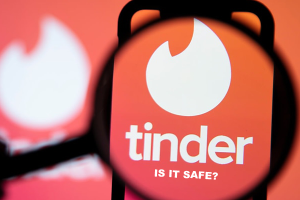
Half a decade ago, a close writer friend, let's call her Jane, found herself in a heated argument with her boyfriend. The source of the discord? A night out with friends that escalated into partying, dancing, and accepting drinks from strangers. The kind of dancing she described was of the decidedly sultry variety, leaving little to the imagination. She returned home late to her long-term boyfriend and casually recounted her escapades.
RELATED: HOW TO RECONNECT AFTER A BREAK: 13 TIPS
Jane recalled her words: "I was dancing with a couple of guys, and obviously nothing happened, but we were grinding, and it was really fun." She added, "He was, like, 'What?' And I was, like, 'Yeah, are you not comfortable with that?'"
Clearly, he was not comfortable. Perhaps, reader, you wouldn't be either. Or maybe you would have been okay with the dancing had it transpired in a salsa class rather than a nightclub? Or if it had involved someone of the same gender? How about if it occurred not with a stranger but with a mutual acquaintance? And what if the partner in question had a history of infidelity? In Reddit threads, group chats, and couples' therapy sessions, opinions on what constitutes an acceptable level of flirting outside a relationship vary wildly.
The complexity of the matter arises from the lack of consensus on what flirting actually entails. Personally, I wouldn't recognize flirting if it gazed directly into my eyes, showered me with compliments, and handed over its phone number. It's a sensation rather than a precisely defined set of actions—a fusion of physical cues, witty banter, and subtle tonal nuances suggesting potential romantic interest. As my friend Chloe aptly put it, "It's hard to describe but easy to feel." Yet, no matter how it's executed, flirting generally conveys a specific message: "I'm interested in you."
Remove the core element most associate with flirting—the ultimate aim of romance—and it becomes a decidedly nebulous territory. Some individuals thrive in this space, while others find it a minefield of jealousy, tension, and emotional baggage. How do you establish the boundaries of what each partner considers acceptable when there's no definitive list of behaviors to reference?
One way to identify the line is by crossing it. Radio hosts Nico Blitz and Jackie Ramirez, partners in both life and work, engaged in an ongoing debate regarding Nico's habit of offering audience members alcohol during DJ sets. Jackie found it a tad too flirtatious. She argued, "He's there to create a vibe for a club, not for one particular person." In the end, the couple, who later dedicated a podcast episode to the topic of flirting, couldn't quite pinpoint what it was. "I wouldn't consider anything I do flirting unless I'm doing it with an intention," Nico explained. Jackie, on the other hand, was more concerned about how his behavior was perceived, whether it was intentional or not.
While Nico might deem flirting an action he'd only undertake if he were pursuing a romantic outcome, others have quite the opposite perspective. My friend Katie, in a monogamous relationship for seven years, views it solely as a fleeting, impersonal interaction—a chance for two sexually unavailable vessels to briefly cross paths: "I get to have this random crush-like interaction, and I don't want either of us to get to know each other past a superficial level." She once, during a previous long-distance relationship, let things progress to a point where someone who definitely wasn't her boyfriend was walking her home, anticipating an invitation inside. It was only then that she realized she'd crossed the line hours earlier.
This aspect is what makes many individuals wary of flirting while in a relationship—the proximity to infidelity. For numerous couples, flirting serves as a warning sign or even a gateway to more concrete infidelity. Occasionally, this concern holds true. Chloe, recounting her experiences along with many others I spoke to for this piece (who prefer to remain anonymous), mentioned her college ex who often hosted random girls at his place. Despite Chloe's discomfort with his behavior towards them, he insisted it was his roommates' doing. Ultimately, he cheated on her, confirming her suspicions and exacerbating her jealousy. They remained together briefly after that but ultimately split. "Because I knew he was much more willing to disregard those boundaries," she noted, "the flirting made me uneasy." Nevertheless, she emphasized, "that doesn't necessarily dictate my view on flirting. It's more about their trustworthiness."
Carly, an office administrator in a 13-year marriage, echoed this sentiment, stating that flirtatious interactions are acceptable until an explicit invitation to engage in a romantic plan is issued. She and her husband exchange compliments, banter, and even dance with other individuals within their mutually agreed-upon boundaries. But what would be considered too far? "An emotional affair or sending explicit photos," she explained. Regardless of one's sexual orientation, relationship status, or personal circumstances, it seems that no one has the exact same threshold for what is acceptable. Ethan, a tech professional in Los Angeles, who was recently part of a throuple with two other men, suggested that there's a "sacred first year or two" in a relationship where "if flirting has to occur, I'd prefer not to witness it. I'm trying to be realistic because I think it will happen regardless."
Moreover, these boundaries are not only distinct from couple to couple, but they also differ for each individual within the relationship. Daniel, a writer based in Los Angeles, highlighted this by recounting a boozy holiday party where he hugged a few too many straight male co-workers. His husband didn't take issue with this, but they both acknowledged that Daniel would have been irked if the roles had been reversed. Katie pointed out that her current boyfriend "understands that I'm more inclined to jealousy than he is." Although she flirts openly when out with friends (which her boyfriend is fine with), she appreciates that he's never exhibited interest in flirting with other women. "I would never be okay with him behaving in that manner."
Jane, who recently became engaged to her previously mentioned boyfriend, is still in the process of determining where each of them draws the line: "There have been times when I've asked for forgiveness rather than permission." However, she noted, "he doesn't complain when I use my charm to score us complimentary $50 martinis at Bemelmans."
Chloe also observed that her boyfriend is more at ease hearing about her flirtatious encounters when they result in free drinks. "One day we'll merge our finances, and this is for us and our future," she rationalizes. "I tell him, 'I'm just trying to save so I can buy you a drink sometime.'" While he may not precisely relish hearing about such situations, she said, "he doesn't accuse me of wrongdoing or crossing boundaries." On this aspect, nearly all couples seem to concur: Flirting with a purpose higher than self-interest is, at the very least, accepted. Jane, who has finagled a free round of Invisalign from her dentist through the power of charm, views flirting as a party trick she enjoys displaying for her now-fiancé. "Hey, look what I can do!"
For some, witnessing a partner flirt is a turn-on in itself. One colleague mentioned that seeing her husband flirt with others makes her feel like she scored a catch. Carly agreed, albeit with a touch more cynicism, stating, "If you have a shiny toy that someone else desires... it's a bit nice!" Daniel explained that he and his husband adopt a playfully competitive dynamic when it comes to checking out strangers. "People assume that once you're married, you lose your attraction and libido," he remarked. "That's far from the truth." Nevertheless, traditional flirting tends to wane in established relationships since the ultimate objective has been attained. When you observe your partner captivating someone else, they cease to be the individual who revealed their peculiar pee odor in the morning; instead, they become the enigmatic stranger who once stirred butterflies in your stomach.
Sarah B. Whalen, an artist based in New York, finds excitement in watching her husband unveil a glimmer of charm for someone new. After six years of dating and three years of marriage, she explained, "I've gotten to know him on all these other levels, and then he assumes this flirty-guy persona, and I'm like, 'Oh! It's a facet of him I don't always get to see, and I like that aspect.'"
One memorable incident occurred during a recent night out at the Crown Heights bar Friends and Lovers. A friend alerted Sarah to a scene that might have unsettled some partners: her husband dancing with another woman. Sarah's response? "I was like, 'Good for him.' He can dance with whoever he wants. We all know where he's sleeping tonight."
The Bottom Line
Flirting, a dance of emotions, is just as distinct as the people in a relationship. What's okay for one person might be too much for another. But what if you have trouble figuring out what your partner wants? Doubts can come in and cause stress and worry. Here's where iFindCheaters, as the best way to catch a cheater, can help make things clear. Our online service is meant to help you find out what your partner is hiding without putting you or them in danger.
iFindCheaters’ advanced algorithms scan over 55 popular dating and alternative lifestyle websites, leaving no room for doubts and giving you all the information you need to make smart choices about your relationship. Curious how to find out if someone has dating profiles? Try us for free and see for yourself!












